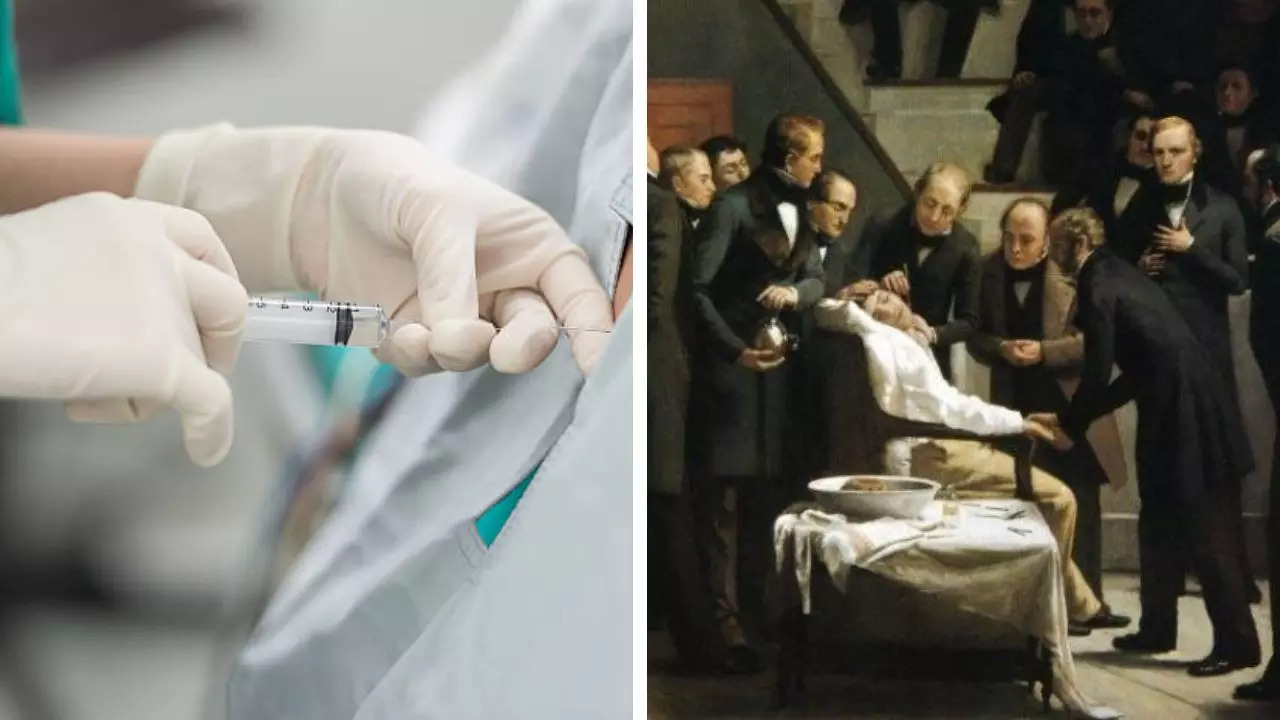Contents
-
news
-
Health
Excruciating pain, no less than death sentence: Know how surgeries were done before the invention of anesthesia.
In earlier times, surgery was brutal – for both the doctor and the patient. Disturbed by the intense pain, suffering, and horrific trauma that patients suffered, many doctors avoided operating out of fear of the consequences. However, the invention of anesthesia in 1846 changed everything. On World Anesthesia Day, read on to know how surgeries were performed before this medical miracle came into practice.

Anesthesia causes temporary loss of sensation by interfering with nerve communication, and before it was used most doctors avoided surgical procedures (Photo: WFSA)
One of the most important inventions of medical science – anesthesia has literally been a lifesaver for many people. Before this medicine, people who had surgery – in addition to their illness, had to suffer excruciating pain and terrible mental and physical trauma, which was unbearable.
While anesthesia causes temporary loss of sensation by interfering with nerve transmission, before its use most doctors avoided surgical procedures as much as possible because they were not able to deal with a patient screaming while performing surgery. In the 19th century, the physical and emotional effects of undergoing surgery were so distressing that the famous John Keats, who was a surgical student in London, left the profession to become a poet.
when and How was anesthesia invented?,
Records say that anesthesia was invented on October 16, 1846, when American dentist William Morton used ether to successfully remove a mandibular tumor in front of a crowd at the Massachusetts General Hospital.
According to Science Direct, Morton is credited with the discovery of anesthesia and the practice of saying “Doctor, your patient is now ready,” which is still used today. Morton then became the first professional anaesthetist.
How was surgery done in earlier times without anesthesia?
As early as the 1100s, doctors extensively covered the patient’s body with sponges soaked in opium and mandrake juice before beginning operations to reduce pain and discomfort. Although some records of Roman history – known in the Middle Ages as a fabrication – Dwale Designed to provide relief to the patient after surgery, there is no confirmation from the medical fraternity on its use.
By the 17th century, doctors in Europe had begun to create a pain-relieving liquid that was a mixture of opium and alcohol – but surgeries had to be performed very quickly because its effects did not last very long. This led to accidents and deaths among both patients and staff.
Subsequently, aromatic anesthesia was also developed by mixing ethanol and sulfuric acid in the distillation process. Along with this, many doctors used chloroform to treat pain, but the problem was that no one knew what the correct dosage was, any combination increased the chances of death of patients.
All these combinations and experiments later led to the development of modern anesthesia.
However, in the early 20th century, ethylene, cyclopropane, and divinyl ether were introduced and used as inhalation agents. Similarly, enflurane and hydroxyflurane were commonly used, but they are no longer available. Intravenous agents also became popular in the 40s and 50s.
Get the latest news live on Times Now with breaking news and top headlines from around the world.


